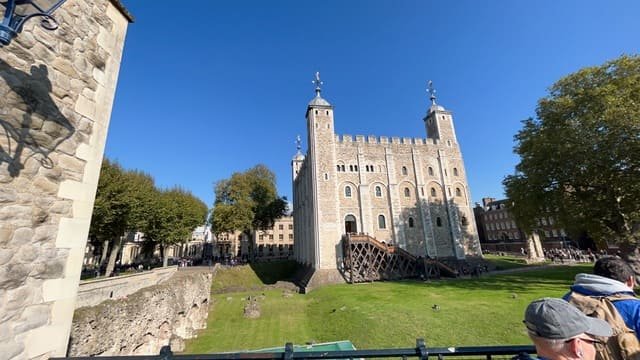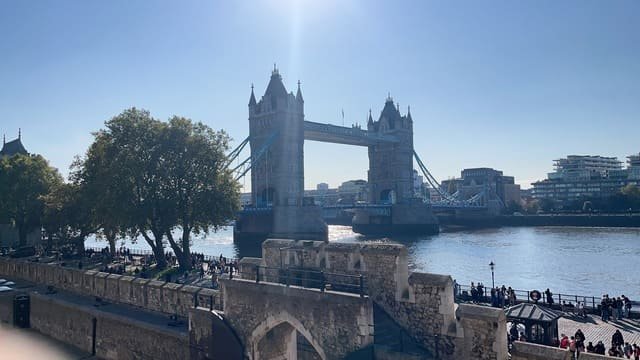
Audio Guide Script
Wakefield Tower is a significant structure within the Tower of London complex. This tower, built between 1220 and 1240, offers a glimpse into the life of one of England’s longest-reigning monarchs, King Henry III.
As you enter, you’ll notice the impressive octagonal shape of the main chamber. This room likely served as Henry III’s private audience chamber, where he would meet with important visitors and conduct royal business.
Look up to admire the vaulted ceiling, though it’s worth noting that the current ceiling is a 19th-century restoration. The fireplace and chapel have also been carefully restored to reflect their medieval appearance.
One of the most striking features is the replica throne and canopy. Based on 13th-century examples, it showcases the Plantagenet lion, symbolizing the royal family. The painting above the fireplace depicts the royal arms, further emphasizing the room’s regal purpose.
Henry III, known for his piety, had a small chapel built adjacent to this chamber. You can see it behind the painted wooden screen, which is a copy of one described in Henry’s own detailed orders.
Interestingly, this tower later became associated with another Henry—Henry VI. It was in this very chamber that Henry VI, the last Lancastrian king, was allegedly murdered in 1471 during the Wars of the Roses.
The Wakefield Tower also served other purposes over the centuries. From 1360, it was used to store important state records, earning it the nickname “Records Tower.” Later, in the 19th century, it even housed the Crown Jewels for nearly a century.
About King Henry III

King Henry III was one of England’s longest-ruling monarchs.
Henry became king in 1216 at the tender age of nine, inheriting a kingdom in turmoil. Despite this rocky start, Henry would go on to rule for an impressive 56 years.
Henry III built the Wakefield Tower between 1220 and 1240 as part of his royal lodgings. Originally, it sat right at the river’s edge, allowing Henry to arrive by boat and enter his rooms via private stairs.
Henry was known for his piety and love of art. You can see evidence of this in the small chapel adjacent to the main chamber. The painted wooden screen is a replica based on Henry’s own detailed orders, showcasing his attention to aesthetic detail.
During his reign, Henry focused on several key areas:
He rebuilt and expanded Westminster Abbey, a project that reflected both his religious devotion and his patronage of the arts.
Henry reissued and reaffirmed Magna Carta, strengthening the foundation of English law.
He promoted education, supporting the development of Oxford and Cambridge universities.
However, Henry’s reign wasn’t without challenges. His reliance on foreign advisors and costly military campaigns led to tensions with English nobles. In 1258, he was forced to accept the Provisions of Oxford, limiting royal power.
As you stand in this chamber, imagine the discussions and decisions that took place here, shaping the course of English history. Henry III’s long reign left a lasting impact, strengthening royal administration and enhancing England’s cultural prestige.
For a while now, we’ll be walking along the outer wall path, checking out various towers. As you leave Wakefield Tower, you’ll see the White Tower on your left and Tower Bridge on your right. It’s a great spot to snap some awesome photos! This view is pretty iconic, so don’t forget to take a moment to soak it all in and maybe grab a selfie or two.


